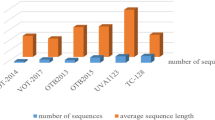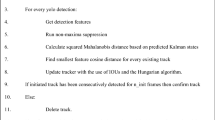Abstract
New automated methods simplify significantly and accelerate processing of data from emulsion detectors. In addition to acceleration, automation of measurements allows large files of experimental data to be processed and their statistics to be made sufficient. It also gives impetus to the development of projects of new experiments with large-volume targets and emulsions and large-area solid-state track detectors. In this regard, the problem of increase in the number of scientists with required level of training capable of operation with automated technical equipment of this class becomes urgent. Every year, ten Moscow students master new methods working at the P. N. Lebedev Institute of Physics of the Russian Academy of Sciences with the PAVIKOM fully-automated measuring complex [1–3]. Most students now engaged in high-energy physics gain a notion of only outdated manual methods of processing data from track detectors. In 2005, a new practical work on determination of energy of neutrons transmitted through a nuclear emulsion was prepared on the basis of the PAVIKOM complex and physical experimental work of the Physical Department of Moscow State University. This practical work makes it possible to acquaint the students with initial skills used in automated processing of data from track detectors and can be included into educational process for students of physical departments.
Similar content being viewed by others
References
S. A. Kalinin, A. G. Martynov, E. L. Feinberg, et al., Nauka Proizv., No. 12, 29 (2000).
A. B. Aleksandrov, I. Yu. Apacheva, E. L. Feinberg, et al., Nucl. Instrum. Methods Phys. Research, A535, 542–545 (2004).
E. L. Feinberg, N. G. Polukhina, and K. A. Kotel’nikov, Elem. Chast. At. Yadra, 35, No. 3, 763–787 (2004).
A. B. Aleksandrov, I.Yu. Apacheva, E. L. Feinberg, et al., Proc. SPIE, 5974, 408–419 (2005).
O. K. Egorov, N. G. Polukhina, N. I. Starkov, et al., Prib. Tekh. Eksp., No. 6, 133–134 (2003).
A. Ya. Arkhangel’skii and M. A. Tagin, Methods of Programming in C++ Builder. Windows Mechanisms and Networks, Binom-Press LLC, Moscow (2004).
Author information
Authors and Affiliations
Corresponding author
Additional information
__________
Translated from Izvestiya Vysshikh Uchebnykh Zavedenii, Fizika, No. 10, pp. 61–65, October, 2007.
Rights and permissions
About this article
Cite this article
Aleksandrov, A.B., Goncharova, L.A., Davydov, D.A. et al. Automated method of processing video data from track detectors. Russ Phys J 50, 1026–1031 (2007). https://doi.org/10.1007/s11182-007-0148-7
Received:
Issue Date:
DOI: https://doi.org/10.1007/s11182-007-0148-7




